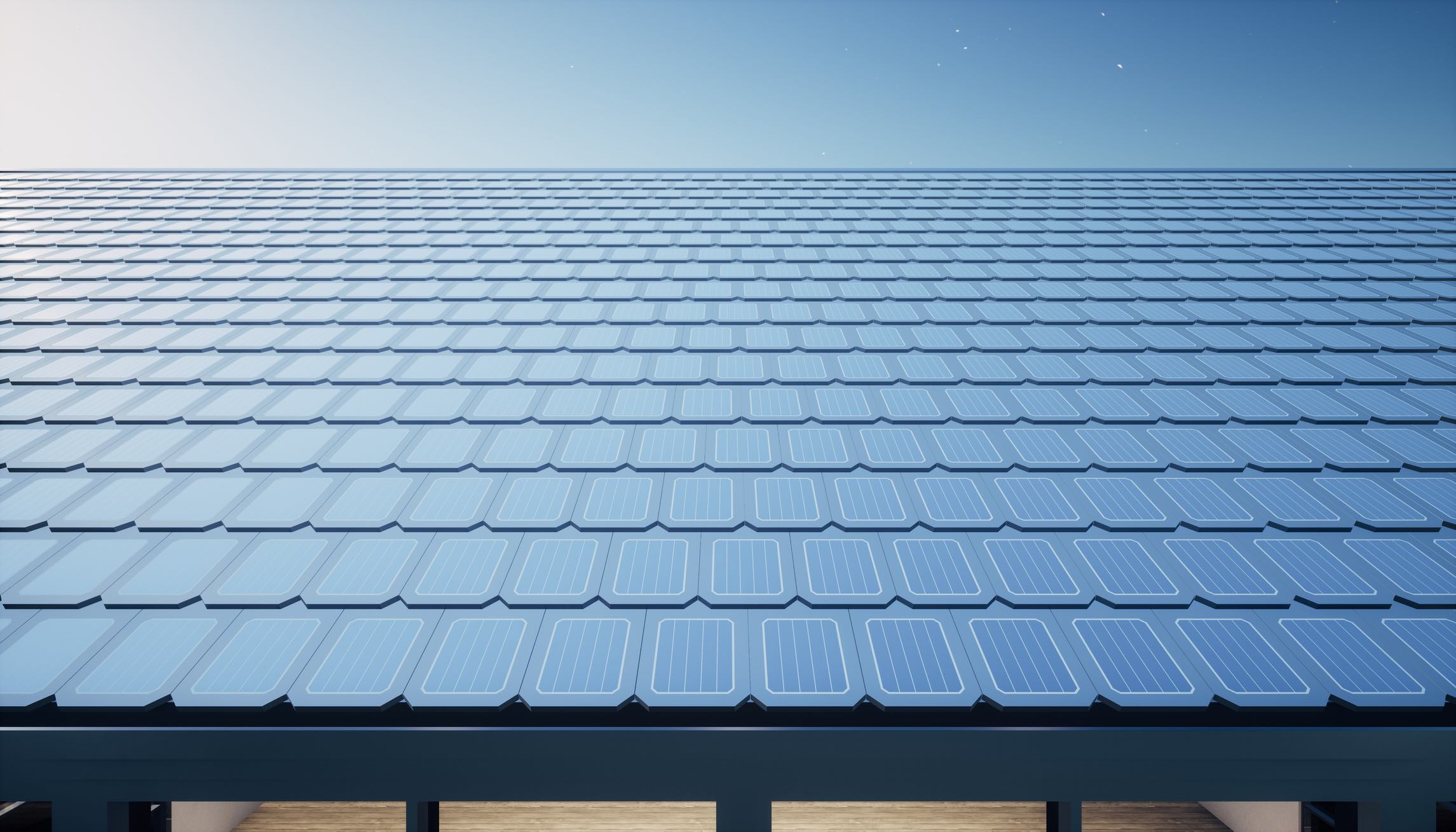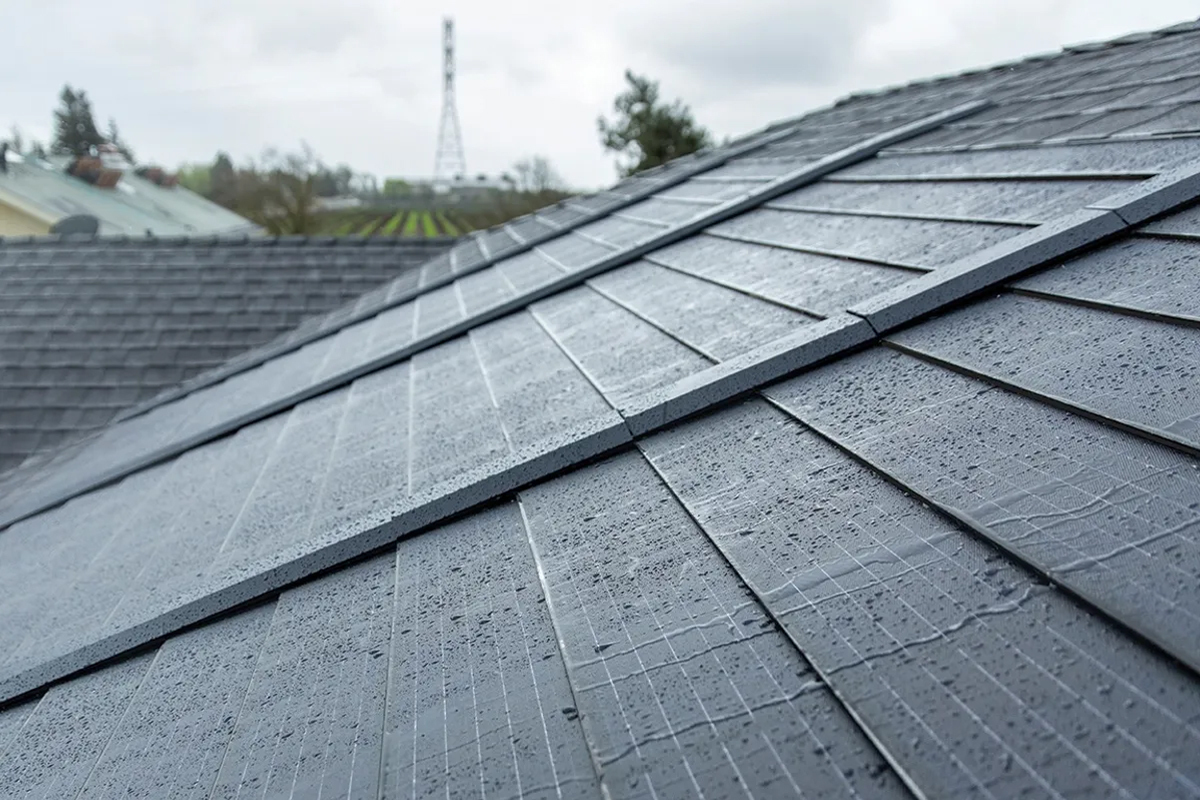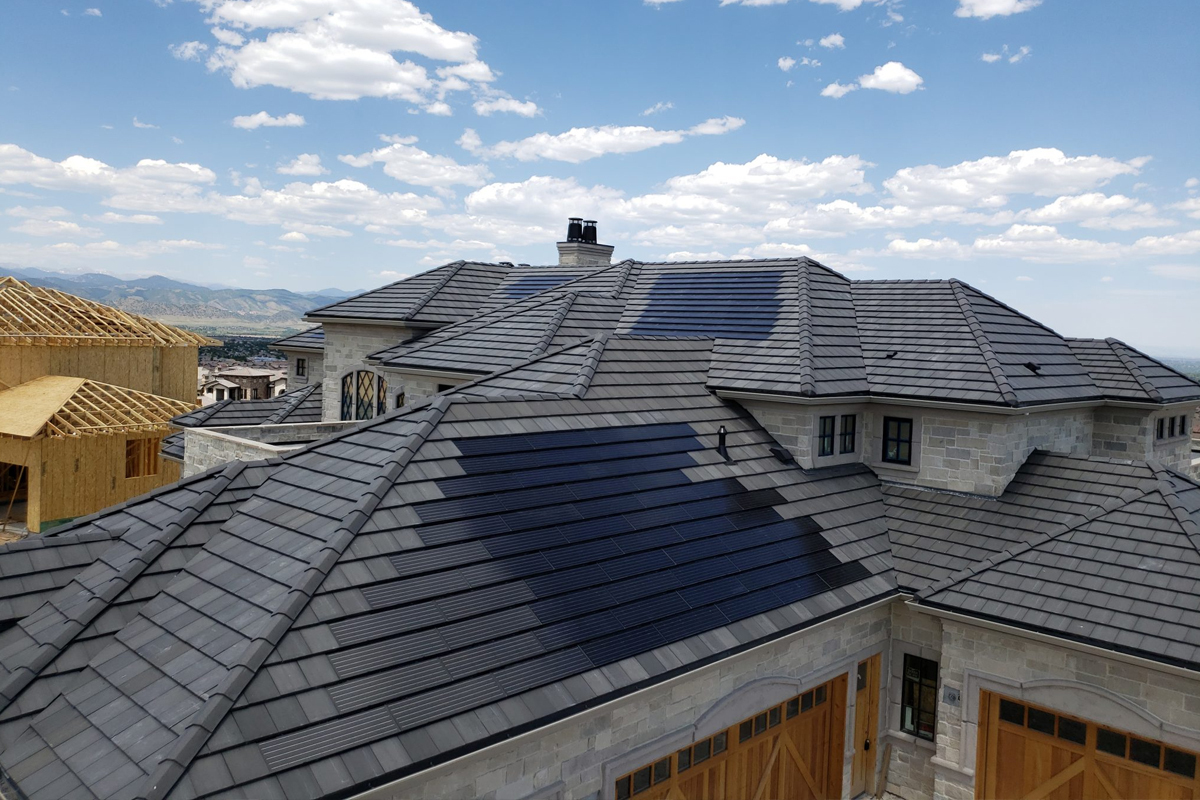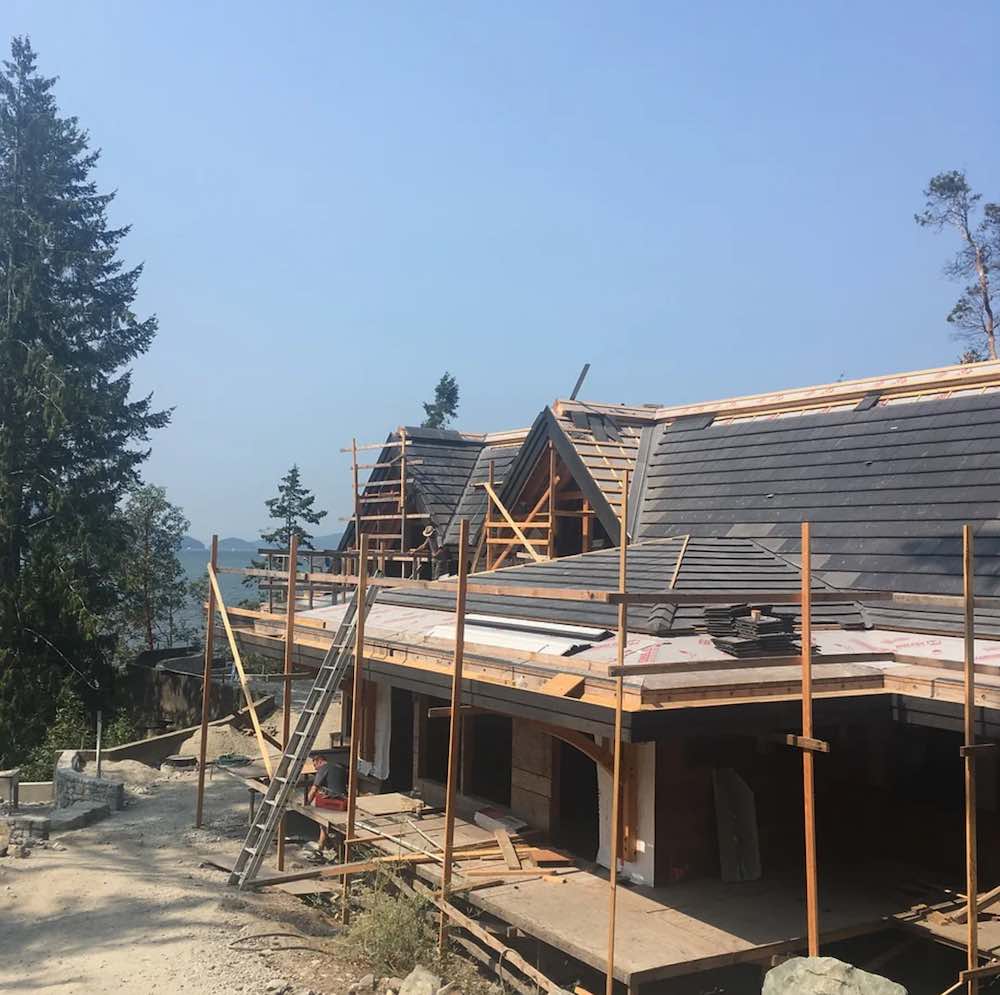Updated 1 day ago
Solar Shingles: Top 6 Brands in 2025
Written by
Jamie Smith

Find out if solar panels or solar shingles are right for you
Editor’s note: We expanded this list to include an integrated solar roofing option for homeowners who want solar built directly into their roof rather than installed as traditional panels.
Solar shingles are roof shingles that are designed to look like traditional roofing materials, but they can actually generate electricity like solar panels.
Solar roofs are more discrete than regular solar panels, making them a popular choice for people building new homes, replacing their roofs, or those living in a homeowner’s association (HOA) that prohibit solar panels.
Solar shingles are a newer technology, so fewer companies sell them. But there are a few stand-out solar roof brands, including:
Tesla’s solar roof
GAF solar shingles
Luma Solar
CertainTeed
Suntegra
VOLTAIC solar roof tiles
Key takeaways
-
Solar shingles are roofing shingles that contain solar cells and have the same functionality as solar panels.
-
Solar shingles typically cost between $3.80 and $7.00 per watt, depending on the brand installed.
-
Solar shingles can come in handy if you want solar and need a roof replacement, are building a new home, live in an HOA that restricts solar installations, or if you’re just interested in the technology.
-
Solar shingles allow you to enjoy all the benefits of solar without sacrificing your home’s aesthetic, but they come at a higher cost and don’t produce as much electricity as traditional solar panels.
What are solar roof shingles?
Solar shingles are roofing shingles that contain photovoltaic solar cells so they can generate solar energy. They are designed to look like and offer the same level of protection as traditional asphalt shingles, all while producing solar power at the same time.
Homeowners can be hesitant to install solar panel systems because of the way they look on their roofs. Solar shingles allow homeowners to still get all the benefits of solar energy without having to sacrifice the aesthetic of their homes.
Just like traditional solar panels, solar shingles are also typically monocrystalline.
Some building-integrated solar roofing products, such as solar roof tiles, use materials like concrete or clay instead of asphalt shingles, but they serve the same purpose of replacing traditional roofing while generating electricity.
How much do solar shingles cost?
The average solar shingle installation costs $27,360 to over $100,000. The cost will vary depending on the brand you choose, your roof size, and where you live.
Most solar shingle installations cost somewhere between $3.80 and $7.00 per watt of solar installed. Tesla’s solar roof costs less, at just $1.80 per watt, but it requires a full roof replacement and expensive materials – making the total cost one of the most expensive options for solar shingles.
6 best solar shingles and solar roof tiles
Some of the best brands for solar shingles and solar roof tiles in 2025 include:
Tesla Solar Roof
GAF Energy
Luma Solar
CertainTeed
Suntegra
VOLTAIC solar roof tiles
Solar shingle brand | Output (per shingle) | Warranty | Cost (per watt)* |
|---|---|---|---|
Tesla Solar Roof | 72 W | 25-year tile and power warranty | $1.80 + roof replacement costs |
GAF Energy | 45 W | 25-year manufacturing warranty 25-year performance warranty 10-year workmanship coverage | $4.00 - $4.25 |
Luma Solar | 80 W | 25-year limited power warranty at 80% 5-year limited product warranty | $4.50 |
70 W | 25-year limited power warranty 25-year limited workmanship warranty 10-year 110 limited wind warranty | $3.00 - $6.00 | |
Suntegra | 114 W | 25-year power warranty 10-year product warranty | $4.00 - $6.00 |
VOLTAIC solar roof tiles** | 15.37 W | 25-year limited power warranty at 80% 10-year limited product warranty | $3.63 |
*Costs and output vary by system size, roof type, and installation requirements.
**VOLTAIC tiles are smaller individual roofing tiles; total system output depends on roof size and tile count.
Tesla Solar Roof

Image courtesy of Tesla, Inc.
Out of all the products offered by Tesla’s Energy line – the solar roof has definitely generated the most buzz. Each shingle has a wattage rating of 72 W, which isn’t bad compared to other solar shingles on the market. If you want to fully invest your home in renewable energy, you can integrate a Tesla solar roof, Tesla Powerwall battery, and a Tesla EV!
As for the cost, Tesla is on the pricier side. This is because Tesla’s solar roof acts as a solar installation and a full roof replacement all in one. The solar tiles and expensive roofing materials cost about $99,500 for an average-sized home.
Installing a Tesla solar roof includes a 25-year product and power warranty, so you’ll have coverage for any faults in your system. Bottom line, Tesla products offer a one-stop-shop for solar power, EVs, and energy storage.
GAF Energy

Image courtesy of GAF Energy
GAF is a well-established roofing materials company that has also ventured into the world of clean energy. GAF Energy offers its line of Timberline Solar Energy Shingles, each of which has a 45 W power rating and comes with a 25-year manufacturing and performance warranty, as well as 10-year workmanship coverage.
You can expect to pay anywhere from $40,000 to $100,000 for a GAF solar shingle installation, but the total cost will ultimately depend on your home’s characteristics.
GAF’s solar shingles are designed with roofers in mind. The top portion of the shingles are made of asphalt so that they can be nailed into the roof like regular shingles, simplifying the installation process and making it possible to get your roof replaced and solar installed by one company.
In 2023, about 2,100 units of GAF’s Timberline Solar energy shingles were recalled due to fire hazard concerns. The issue has since been resolved, and GAF Energy’s response made it clear that they provide top-notch support.
Luma Solar

Image courtesy of Luma Solar
Luma Solar developed the first fully integrated solar roof system in the U.S., referring to their solar shingles as a luxury product that homeowners can upgrade in the future to meet advanced solar technology standards.
Luma Solar’s solar roofing is similar to Tesla’s, where you must get a full roof replacement of solar and non-solar tiles. A full end-to-end installation can cost between $70,000 to over $100,000.
Luma’s shingles have a power rating of 80 W per roof tile and come with a 25-year production warranty and a 5-year limited product warranty. The shingles are also rated to withstand winds of 200+ miles per hour, which can be useful for residents living in areas prone to major storms and hurricanes.
CertainTeed Solstice Shingle

Image courtesy of CertainTeed/Photo by Mark Bealer Studio 66
CertainTeed is a reputable company that manufactures traditional roofing shingles and has begun offering a line of solar products. CertainTeed currently offers a line of residential building-integrated photovoltaic roofs (BIPV) and solar panels.
CertainTeed solar shingles cannot be installed over an existing roof system and are designed to be installed in new construction or during a roof replacement. There’s no indication online on how much a full installation of CertainTeed’s Solstice shingles will cost, but you can expect to pay between $210 and $420 per shingle.
CertainTeed’s Solstice Shingles offer 70 W of power output per shingle and 19.85% efficiency – all backed by a 25-year power and performance warranty. As an added bonus, CertainTeed also offers a 10-year 110 MPH limited wind warranty.
Suntegra Shingle

Image courtesy of Suntegra
Suntegra is another popular brand that manufactures solar shingles. Suntegra offers solar shingles and solar tiles, so you can choose which integrates better with your existing roof material.
These low-profile monocrystalline solar shingles have three different output wattages to choose from, 105 W, 110 W, and 114 W, giving homeowners different options to support their energy production needs. The cost varies from $4.00 to $6.00 per watt, depending on which wattage you choose. Suntegra’s shingles are also backed by a 25-year power warranty and a 10-year limited product warranty.
VOLTAIC solar roof tiles

VOLTAIC has installed integrated solar roof tiles on around 80 homes across the globe. Image source: VOLTAIC
VOLTAIC solar roof tiles are best suited for homeowners who want solar power built directly into their roof rather than mounted on top of it. VOLTAIC uses building-integrated photovoltaic tiles made from concrete or clay that function as both a durable roofing surface and an energy-generating system. This makes the company a strong option for homeowners replacing an existing roof, prioritizing curb appeal, or navigating strict HOA or architectural requirements.
While VOLTAIC solar roof tiles represent a more specialized and premium approach than traditional solar panel systems, they expand the range of options for homeowners who value seamless roof integration alongside solar performance.
What are the pros and cons of solar shingles?
Just like a traditional solar installation, solar shingles come with its own set of advantages and disadvantages.
Pros
-
Environmentally friendly
-
Reduces electricity bills
-
Eligible for incentives
-
Good curb appeal
Cons
-
Can be more expensive than solar panels
-
Limited options to choose from
-
Requires entire roof replacement
-
Not as efficient
Advantages of solar shingles
Environmentally friendly: Solar shingles are a renewable energy source that does not give off any harmful emissions.
Reduces electricity bills: Energy generated by solar shingles powers your home, so you use less electricity from the grid and save money on your monthly electric bill.
Eligible for incentives: Solar shingles are eligible for the 30% federal solar tax credit and may also be eligible for other local incentives depending on location.
Good curb appeal: Solar shingles are integrated into your roof, giving a sleeker look than a bulky solar panel installation. Shingles could also be a solar solution if you live in an HOA that doesn’t allow solar panels.
Disadvantages of solar shingles
Expensive: In most cases, the total cost of installing solar shingles is about three times the cost of conventional roofing materials, and most solar shingles are at a higher price point than solar panels in the U.S.
Limited options to choose from: Solar shingles are a newer technology, so there are fewer brands to choose from.
Requires roof replacement: A traditional solar system is placed on top of an existing roof, whereas solar shingles replace the roof itself, which might require an entire roof replacement.
Not as efficient: Solar shingles can’t produce energy as efficiently as solar panels because they’re installed flat against the roof, unlike panels that can be angled for optimal performance as needed.
Solar panels vs. solar shingles: Which option is better?
The truth is that it depends on your circumstances! In general, traditional solar panels will be a better financial investment for most homeowners because they cost less to install and produce more energy. Solar shingles are more of a luxury purchase.
There are scenarios where solar shingles are the right option. For example, if you want solar but can’t install panels due to HOA restrictions, solar shingles can provide the benefits without the look of solar panels. Aside from this, solar shingles could come in handy if your roof is in desperate need of a replacement – it's a roof replacement and solar installation all in one! They might be right for you if you have the money and are interested in the technology.
But, in general, traditional solar panels will be a better financial investment for most homeowners. For starters, solar panels are substantially cheaper than solar shingles. Not only that, but solar panels can generate electricity more efficiently, meaning you’ll save more money on your bills, all while spending less upfront.
Unsure if solar is right for your home? If you aren’t sure if your specific home is suitable for solar, you can put your home’s information into our solar calculator to learn more about cost, savings, and available incentives!
Solar roof shingles: FAQs
Jamie is a Content Writer and researcher at SolarReviews. A recent graduate of La Salle University in Philadelphia, Jamie earned her B.S. in communications with a concentration in journalism, mass media, and public relations. Jamie has previously worked at a marketing company where she had the opportunity to highlight and promote small business owners through long-form stories and interviews. With a deep-rooted passion for creativity, Jamie stri...
Learn more about Jamie Smith